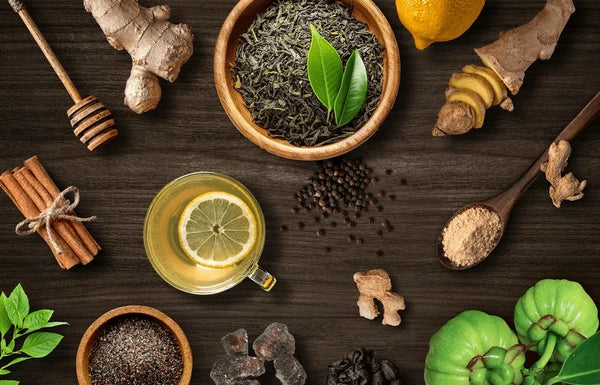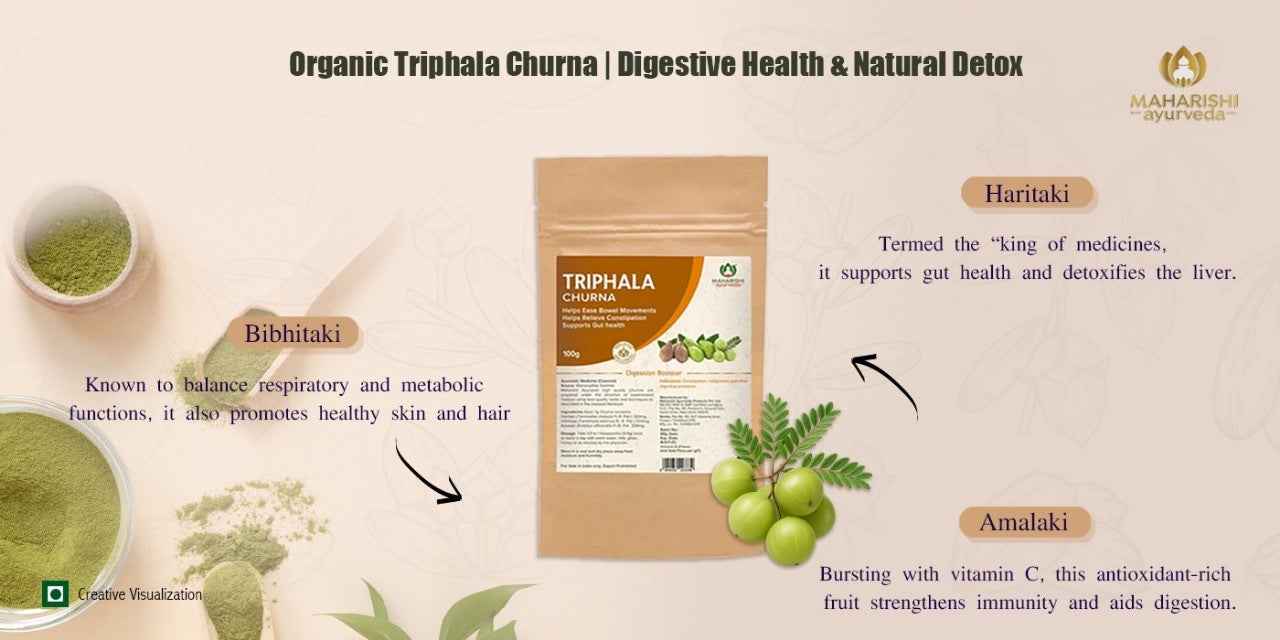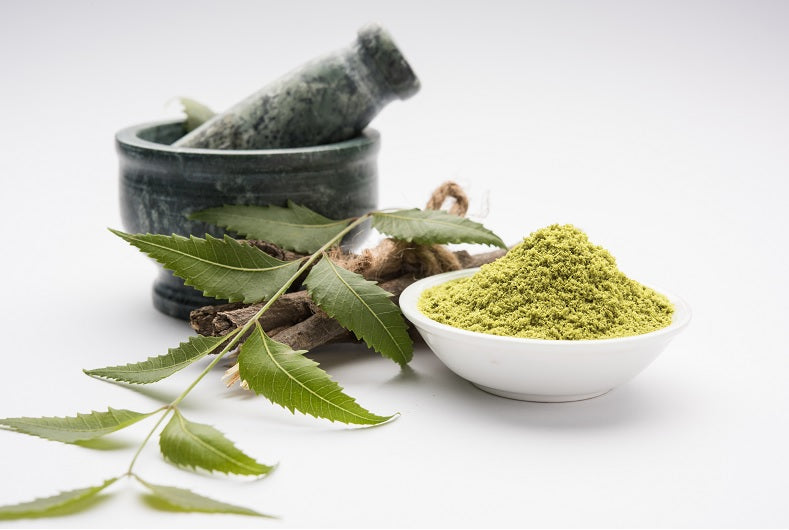
Ayurvedic Path to Natural Weight Loss & Obesity Management
10 Oct, 2025Understanding Obesity in Today’s Lifestyle Obesity is no longer a fringe problem; it’s the norm ...
Read more
Obesity is no longer a fringe problem; it’s the norm for a significant share of the world’s population. In 2022, roughly 1 in 8 people were living with obesity, and adult obesity has more than doubled since 1990, while child and adolescent obesity has quadrupled. India mirrors this trend: national surveys and recent analyses highlight rising overweight/obesity across ages, with notable increases in children and adolescents over the past decade and a half.
From an Ayurvedic lens, Sthoulya (obesity) arises when Kapha and Meda Dhatu (fat tissue) increase disproportionately, often on the backdrop of Mandagni (low digestive fire) and Ama (metabolic waste). Calorie counting alone can’t fix root imbalances. Ayurveda emphasizes holistic correction of digestive strength (Agni), clean channels (Srotas), doshic harmony, mindful routines, and sustainable food and movement.
Sthoulya / Medoroga is classified as a Santarpanotha Vikara, a disorder born from over-nourishment and inactivity. When Kapha aggravates, it obstructs Medovaha Srotas and slows Medo Dhatvagni (fat-tissue metabolism). The result is improper fat processing, heaviness, lethargy, and abnormal accumulation of Meda. Simultaneously, Vata may stimulate Jatharagni to increase appetite, but with poor cellular uptake and low expenditure, weight keeps rising. In short, obesity is not only “excess fat,” but impaired metabolic function driven by Kapha–Ama pathology.
At the core of Ayurvedic practices is a holistic approach, which holds that obesity is a factor of imbalances in the system - merely controlling calories will not correct it. The solution lies in:
1. Holistic correction of digestive strength (agni)
2. Unhindered flow of body processes or clean srotas (body channels)
3. Doshic balance
4. Mindful daily routines
5. Balanced meals, ideally sattvik food, and exercise or mindful movements
Poor digestion (Mandagni): weak enzymatic activity and sluggish bile/secretions lead to incomplete digestion and Ama.
Sedentary lifestyle: inactivity during Kapha-dominant times (6–10 am/pm) compounds heaviness.
Kapha-aggravating diet: heavy, oily, sweet, cold foods; overeating; irregular meal timing.
Mental/emotional factors: stress, tamasic routines (late nights, daytime sleep), and emotional eating create hormonal and behavioral loops that favor weight gain.
Other contributors noted in classical texts: hereditary tendency, excessive cheerfulness without restraint, lack of intellectual engagement—all of which reduce regulatory discipline around food and movement.
A comprehensive plan addresses detox, diet, digestion, movement, mind, and routine:
Use under qualified Ayurvedic supervision; dose and duration vary by prakriti and comorbidities.
Triphala Churna: Supports digestion, elimination, and gut-microbiome harmony; helpful as a daily gentle detox.
Read the Complete Guide to Triphala for weight loss–>
Medohar Guggulu / Navaka Guggulu: Traditional Lekhana actions for Kapha–Meda; often used for stubborn adiposity.
Lohasava: It aids metabolism and prevents excessive gathering of fat in the body, which may lead to unnecessary weight gain.
Vidangadi Lauh: By kindling agni and removing ama, it supports healthy metabolism and helps check fat accumulation.
Aarogyavardhini: A powerful liver tonic that corrects the dhatu-parinama (proper transformation of tissues / dhatus), not just meda dhatu (fat tissue). Since faulty dhatu-parinama is a key factor in obesity, this formulation supports holistic balance and healthy weight management.
Varanadi Kashayam: With its kaphahar nature, this scrapes excess meda dhatu and promotes natural fat metabolism.
Also check out Top ayurvedic herbs that help in weight loss—>
Choose Laghu (light), Ruksha (dry), and Ushna (warm) foods. Reduce heavy Kapha-promoting items like dairy, fried snacks, sweets, and late-night meals.
Grains & legumes: Barley (Yava), millets, and old rice in moderation; pulses such as mung, lentils, and horse gram (Kulattha).
Vegetables & fruits: Favor leafy greens, gourds, and naturally bitter vegetables; fruits like apples, pomegranate, and pears are light, while very sweet fruits are best limited.
Spices to kindle Agni (digestive fire): Ginger, cumin, black pepper, cinnamon, turmeric, and mustard seeds enhance digestion and reduce Ama (toxins).
Herbal teas (ushna-pana): Simple blends of ginger, cumin, fennel, and coriander help relieve bloating and support healthy metabolism.
Eat only when true hunger is present. Stop before you feel full (around 75% satiety).
Have three proper meals daily, with madhyahn bhojana (lunch) as the heaviest meal, ideally between 12–1 pm when Agni is strongest.
Avoid unnecessary snacking or eating out of emotion or boredom.
A gentle walk after meals aids digestion and circulation.
Practice yoga or light exercise during Kapha kala (6–10 am / 6–10 pm) to counter heaviness and inertia.
Include simple strength or resistance practices 2–3 times a week to keep Meda Dhatu (fat tissue) in check and maintain strength.
Unlike crash diets or chemical pills, Ayurveda focuses on natural herbs, diet, and lifestyle changes. This makes weight loss gradual, safe, and long-lasting without side effects.
Ayurveda doesn’t just look at fat as the problem; it corrects the imbalance of Doshas (especially Kapha), weak digestion (Agni), and toxin build-up (Ama) that actually cause weight gain.
By improving digestive fire (Agni), Ayurvedic therapies reduce heaviness, bloating, and sluggishness. This also supports a clearer and calmer mind, as body and mind are deeply connected in Ayurveda.
Ayurvedic herbs and therapies help regulate metabolism, blood sugar, thyroid function, and stress hormones, creating a natural hormonal balance that prevents abnormal fat accumulation.
By improving metabolism, reducing excess fat, and keeping digestion strong, Ayurveda naturally reduces the risk of diabetes, hypertension, heart disease, and joint problems that often accompany obesity.
Drink a glass of warm water or lemon water/ triphala decoction first thing in the morning.
This helps flush out toxins, improves digestion, and boosts metabolism.
Add ginger, black pepper, turmeric, cinnamon, and cumin to your meals.
These spices act as natural fat burners and improve digestion (Agni).
Taking 1 teaspoon of Triphala powder with warm water before bed helps detoxify the body, improve digestion, and support fat metabolism.
Mix a teaspoon of pure honey in lukewarm water and drink it on an empty stomach.
Honey has a “scraping” (Lekhana) effect on fat tissue and helps in gradual weight reduction.
Sleeping during the day increases Kapha and Meda (fat tissue), which slows metabolism.
Instead, stay active during the day and ensure a good night’s sleep.
Have your last meal before sunset or by 7:30 pm.
Eating late at night causes Ama (toxins) and fat accumulation.
Engage in yoga, brisk walking, or light workouts, especially between 6 am – 10 am, the Kapha-dominant period, to burn fat effectively. Exercise should be done at half the strength of the individual's body capacity.
A simple home version can be done by rubbing dry Triphala or barley flour on the body before bathing.
This reduces excess Kapha, improves circulation, and tones the skin.
A light fast with warm soups, herbal teas, or fruits once a week gives the digestive system rest, burns stored fat, and removes toxins.
Avoid overeating, processed foods, and emotional eating.
Eat with awareness, chew food well, and stop when you feel 75% full.
Late-night awakenings cause food cravings due to the disruption of leptin and ghrelin hormones, causing obesity.
Sustainable weight loss is a mind–body process. Ayurveda reframes obesity from “calories only” to Agni, Ama, and Kapha balance, placing digestion, daily routine, and mental steadiness at the center. Begin with light, warm, Kapha-pacifying meals, Triphala or appropriate Guggulu formulations under guidance, morning movement, adequate sleep, and periodic detox (as advised). Over weeks, you’ll notice lighter digestion, steadier energy, fewer cravings, and weight trending in the right direction.
Ready to personalize an Ayurvedic plan? Consult a Vaidya to tailor detox, herbs (Triphala/Medohar Guggulu, etc.), and diet to your prakriti and health goals. If you’re comparing options, start a 3–6 week Kapha-pacifying reset today to track waist, energy, cravings, and sleep for tangible, sustainable progress.
Balance Weight, Boost Metabolism — Explore Now!
Triphala, the classic formulation of three Ayurvedic herbs, has cleansing and fat-reducing properties. It promotes digestion, acts as a gentle detoxifier and colon cleanser, and removes toxins that block fat metabolism. Scientific studies also suggest Triphala may have properties that help control cholesterol and tackle obesity.
Yes, Ayurveda can help manage and even reverse obesity, but “permanently” depends on maintaining balance. Ayurveda corrects the root causes of obesity weak digestion, toxin build-up, Kapha imbalance, and poor lifestyle habits. Panchakarma, herbal medicines, diet correction, and lifestyle practices bring the body back into balance. If the person continues to follow Ayurvedic guidelines, weight can be maintained permanently. But if old habits (overeating, day sleep, lack of exercise) return, obesity can reappear.
Ayurveda uses natural herbs, foods, and therapies rather than synthetic chemicals or crash diets. Therapies like Triphala, Guggulu, Vidangadi Lauh, and lifestyle practices can be followed safely for months or even years .Unlike modern weight-loss pills that may cause weakness, Ayurveda focuses on strengthening digestion, metabolism, and immunity, so it is safe and sustainable.
Kapha is one of the three doshas in Ayurveda, a type of bio energy responsible for structure, stability, lubrication, and growth in the body.
In balance, Kapha gives strength, stamina, and immunity.
When aggravated (due to heavy food, inactivity, oversleeping, etc.), Kapha becomes excessive and sticky, leading to sluggish digestion and metabolism, which in turn causes fat accumulation, lethargy, heaviness, and water retention.
Understanding Obesity in Today’s Lifestyle Obesity is no longer a fringe problem; it’s the norm ...
Read moreIntroduction Triphala tri (three) + phala (fruits) is one of Ayurveda’s most trusted, time-tested...
Read moreAyurvedic toothpaste often tastes strong, bitter, or spicy due to herbs like neem, clove, babool,...
Read moreSome time ago, popular Indian fashion designer Masaba Gupta shared her favourite night-time welln...
Read moreआँखों के बिना दुनिया बेमानी है, इसलिए आँखें हमारे शारीरिक और सामाजिक जीवन के लिए बेहद महत्वपूर्ण ...
Read more Guide to Immunity
Guide to Immunity

Understanding Obesity in Today’s Lifestyle Obesity is no longer a fringe problem; it’s the norm ...
Read more
Introduction Triphala tri (three) + phala (fruits) is one of Ayurveda’s most trusted, time-tested...
Read more
Ayurvedic toothpaste often tastes strong, bitter, or spicy due to herbs like neem, clove, babool,...
Read more Featured Articles
Featured Articles

Are you struggling with your oral health because of your eating habits? Are toothaches becoming your new normal because you have not been brushing well? Is eating ice cream a big NO, as you have brushed a little too much? A lot of you have been made to believe that your oral issues emanate from what you are doing wrong or not doing the right thing. What if we tell you that you have been approaching this all wrong and trying to solve the problems topically instead of addressing the root cause? Do you ever think about the real reason for these significant dental issues?
Ayurveda helps you focus on the fundamentals and identify the root cause. It is the science of treating the underlying imbalances and correcting the cause in a completely natural and effective way. Among its numerous health benefits, when it comes to oral health, Ayurvedic Toothpaste is a game-changer for preserving strong and healthy teeth. A natural and effective alternative to the chemical-laden equivalents and a beneficial synergy of herbs that help in holistic dental care. Surprising, right!? Well, read on to turn your surprise into a new belief!


नित्यमध्मान तां तांस्तु व्याधिभिश्च विवर्जितः।
रसैश्च दन्तमूलानां रूक्षैराचाम्य विक्रियाम्॥
Meaning: Regularly cleaning your mouth makes your teeth and gums healthy and prevents diseases.
The Charaka Samhita mentions the importance of oral care in overall health. This is more than just information from ancient scriptures; much research has validated the role of a healthy mouth in a healthy body. A 2022 study in Frontiers of Microbiology highlighted this critical link: an imbalance in the oral microbiome causes periodontal disease and promotes cardiovascular disease development.
Wondering how? Saliva is the first fluid that is secreted during digestion. It lubricates the tongue and oral cavity and ensures that the whole digestive tract stays lubricated, along with the chewed food passed down to the stomach. It carries all microbes into your gut and is the most crucial link between oral and overall health
Saliva also contains some antimicrobial proteins and enzymes that keep harmful microorganisms from growing while ensuring the good ones thrive. However, any saliva production or composition imbalance can affect the oral microbiota. This could be due to poor oral hygiene, an unhealthy diet, or systemic health issues.
This imbalance can have dire consequences for oral health, such as dental caries, gum issues, and infections. Moreover, balanced saliva helps lubricate and break down food for easy digestion and ensures that teeth get essential minerals to maintain and repair themselves.

Dantadhaawan is an ancient Ayurvedic oral hygiene practice that involves using herbal twigs, AKA ‘‘Datoon’’, to clean teeth and gums. Commonly used twigs include those from the neem, babool, and liquorice plants. These twigs have antimicrobial properties that help maintain oral hygiene.
According to the Shadrasa (six tastes) in Ayurveda, every herb has a Rasa (dominant taste) that determines its properties and actions.
An ideal toothpaste must contain Katu, Tikta, Kashaya, and Madhura Rasa, each of which positively impacts maintaining the health of our oral cavity.
Let’s uncover the properties of these essential Rasas to know more:
|
Rasa |
Action |
|
Katu (Pungent) |
It deeply cleanses the oral cavity |
|
Tikta (Bitter) |
Antibacterial & antiseptic action |
|
Kashaya (Astringent) |
Provides pain relief |
|
Madhura (Sweet) |
Strengthens the gums & teeth |
You see, an Ayurvedic toothpaste not only cleanses your teeth but also gives Bala (strength) through the properties of the natural Dravyas (herbs) used in it.

It may sound complex, but formulating toothpaste at home is as easy as making a face pack! All you need is 10 grams of dry leaves or powders of neem, mulethi, jamun, and amalaki. Grind or mix them, and your dry toothpaste powder is ready! During every brushing session (preferably morning and evening), mix it with your *Dosha-appropriate adjuvants. Vata *Dosha* can mix sesame oil, Pitta *Dosha* can mix ghee, and Kapha *Dosha* can mix honey/mustard oil, and your quick, healthy toothpaste is ready!
If you’re a busy bee, not interested in DIYs, or find it difficult to source these ingredients, don’t worry! We have Maharishi Ayurveda Ayurdent Toothpaste. It is your one-stop solution to all your oral problems. It’s a unique formulation that works on your saliva and is suitable for all body types, irrespective of the Doshic predominance.
It contains neem for cleansing, triphala for balancing, and meswak & ginger for stimulating saliva. Ayurdent promotes holistic oral health naturally and provides protection from major oral problems like cavities, plaque, bleeding gums, toothache, sensitivity, and bad breath. It contains the goodness of 20 Ayurvedic ingredients and is free from SLS and fluoride. Certified by COSMOS Natural, it stands out for its authenticity compared to other Ayurvedic and herbal toothpaste. This innovative, non-foaming formula is a must-try in the category.
 Vaidya Recommended
Vaidya Recommended

Understanding Obesity in Today’s Lifestyle Obesity is no longer a fringe problem; it’s the norm ...
Read more
Introduction Triphala tri (three) + phala (fruits) is one of Ayurveda’s most trusted, time-tested...
Read more
Ayurvedic toothpaste often tastes strong, bitter, or spicy due to herbs like neem, clove, babool,...
Read more
As per Ayurveda, no two individuals are alike. Maharishi Ayurveda offers personalised treatment for each individual at all touch-points. Consult our expert Vaidyas to get root cause-based personalised treatment from the comfort of your home
CONSULT VAIDYA



